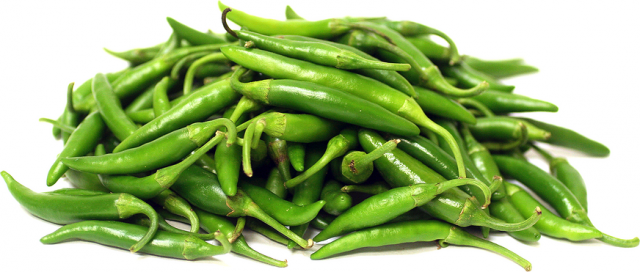 Not every gardener knows that the homeland of chili peppers is the prairie of Mexico. The name of this country in local dialect sounds “chilli”, which translates as “bitter”. Europeans learned the burning taste of an exotic fruit after America (Mexico) was discovered by Europeans.
Not every gardener knows that the homeland of chili peppers is the prairie of Mexico. The name of this country in local dialect sounds “chilli”, which translates as “bitter”. Europeans learned the burning taste of an exotic fruit after America (Mexico) was discovered by Europeans.
The culture imported from overseas was named for this similarity - chili pepper. Since then, it has become very popular. The leaders in cultivation are India and Thailand, where the highest yields of chili are obtained.
Content
Grade characteristics
Green hot pepper is a low (about 50 cm) spreading bush with glossy leaves. The flowers are white, grayish-purple with light droplets, depending on the variety, and the variety variety of this culture is very wide. It is possible to grow this variety in any region of Russia, Ukraine. Fruits, weighing 100-300 grams, ripen within 3-4 months. Their shape is different: long - elongated, miniature - spherical, wide - semicircular. To get a rich harvest, vegetable growers plant 20-26 plants per 1 square meter, and two plants are placed in one hole. In addition, simple processes are carried out:
- pinching of each bush (removal of shoots from the sinus of the stems);
- pinching the top of the plant;
- removal of part of the flowers during heavy flowering.
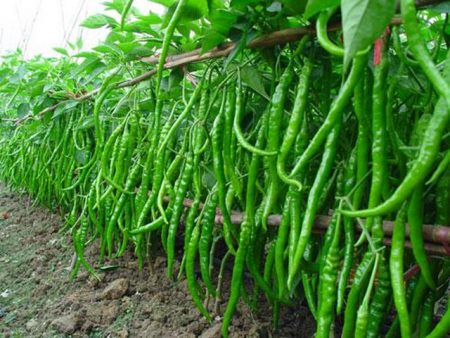
How to grow an exotic culture
So that the harvest from the site does not disappoint the owner, you need to choose high-quality chili pepper seeds. Many plant seeds collected in the fall from their own crops. This is not always justified, because seed collection requires fruits that are in shape and size corresponding to varietal standards. Seed material may lose germination when improperly dried and stored. Pepper seeds germinate for a long time, so it is better to organize seedling cultivation in early February:
- moistened cotton pads on which seeds are laid are placed on the bottom of the container; the container is covered with a damp cloth or glass so that the moisture does not evaporate, and is transferred to a warm place;
- preparing a soil mixture of humus, sand and sheet soil, in a ratio of 2: 1: 1;
- sprouted shifts are planted immediately in small cups filled with prepared soil, one in each; if you are landing in boxes, you will have to dive, because young shoots will interfere with each other;
- with the appearance of the first leaves, the containers should be moved to a sunny place;
- after two weeks, hardening begins, the duration of which increases gradually;
- as soon as the threat of May frost passes, the seedlings land on a site protected from the wind.
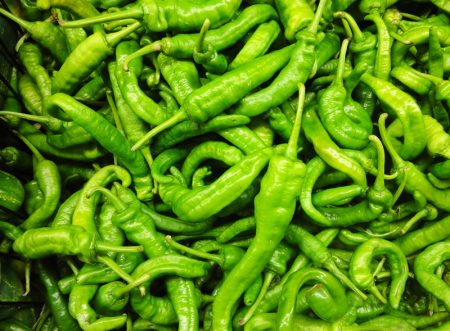
Another method of growing is interesting: the seedling bushes are cut to a height of 10-15 cm from the root and transplanted into containers that must be lowered into the cellar. During the wintering period, it is necessary to water the bush periodically so that the soil under it does not dry out. With the beginning of the sowing company, plants are fed and planted in open ground: the development and appearance of fruits occurs much faster. Vegetable growers claim that one bush can grow up to 5 years.
Open Crop Care
Agronomists say that the plant will need enough fertilizers that are contained in the soil for development.Practicing vegetable growers object: this condition will be effective if organic fertilizers are applied to the soil in the autumn. Otherwise, complex fertilizers are applied under the bushes to improve growth and development, usually before watering. If the crop area is small, you can feed with dissolved and fermented chicken droppings. The second condition for obtaining a rich harvest is timely watering. On hot summer days, seedlings should be watered every other day. This is best done in the evening. If the area is small it is better to use lukewarm warm water so that it warms up and enriches with oxygen. As it dries, the soil should be loosened.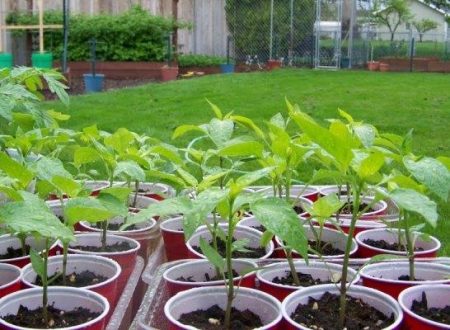
Features of growing hot pepper
Pepper is an extremely heat-loving plant that requires a lot of sunlight, so the southern regions will be the most suitable areas for outdoor cultivation. In the northern region, chili pepper does not have enough heat and color of the sun, so it should be grown in greenhouse conditions, especially since it can be used as food without waiting for full maturity. Residents of the northern regions often grow peppers on window sills. Bushes hung with long green pods perform at the same time a decorative function. In this case, several conditions must be observed:
- Flowerpots are installed on window sills from the south and southeast side, where the crops will receive the proper amount of light. In cloudy weather, you will have to turn on white or daylight lamps (the number of light sources depends on the power: a 150-watt lamp ideally illuminates 1 sq. M of area). They should be located at a distance of 30 - 40 cm from the crops.
- Important is compliance with the temperature regime. It should be remembered that it is pulled by frost from frosted glasses, the temperature decreases by 3-5 ° C. Flowerpots should be moved to the edge of the windowsill, if possible, and removed at night.
- If the heating radiators are located directly under the windowsill, the pepper may suffer from overheating. In this case, plentiful watering and frequent spraying of leaves is necessary. You can install plywood valves along the entire length of the window, which will divert hot air to the side.
- For watering, you need to use water at room temperature. If the room is cold, the water is heated. In winter, watering is carried out only in the morning.
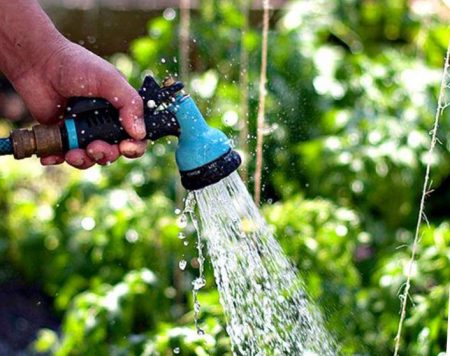
Disease resistance
Chili pepper, due to its bactericidal properties, is resistant to plant diseases and pests, but if agricultural rules are not respected, a number of troubles can be expected:
- excessive watering causes the development of an infectious fungus (popular name - "black leg");
- when growing hot pepper in greenhouses due to insufficient ventilation and watering, the activity of spider mites and aphids is activated.
Experts do not recommend the use of chemical insecticides, because they, destroying the causative agents of bacterial infections, lower the taste of pepper. Biological and folk remedies will help to cure plants, as well as protect them in the future: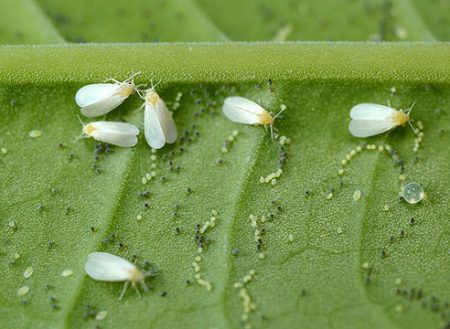
- wood ash;
- decoctions of herbs;
- tobacco infusion;
- strong solution of laundry or tar soap.
Harvesting and storage
One of the amazing characteristics of a capsicum is that the crop ripens gradually, so the pods can be consumed unripe. Fans of thrills will wait for their full ripening, because it is at this moment that the taste of pepper seeds collected on the stem is especially hot. At the end of August, you can collect slightly unripe chili: the fruits "reach" at home. The ovary is again formed on the released shoots.Just before the frost, the last wave of the harvest is gathering.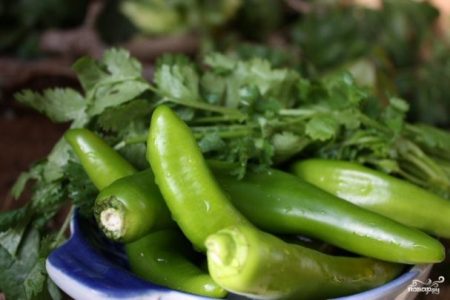
You can store green pepper in various ways:
fruit drying
Skewered on a harsh thread, the pods dry out and can be stored all winter without losing their qualities and aroma.
conservation
Green pods can be cold preserved:
The fruits should be washed with the stalks and lay in layers in an earthenware jug, pouring each layer with coarse salt; oppression is superimposed on the last row. After 2-3 weeks, seasoning can be eaten. Pepper in a jug can stand for several months, while it does not mold. Some housewives fill a container with prepared pods with a strong salt solution prepared “on an egg” and close the lid. Pickled peppers are also delicious.
freezing
Harvest can also be saved by the method of dry freezing. Before placing the fruits in the freezer, it is recommended to keep them in boiling water for several minutes.
The green pods used in any form give the dishes a piquant taste.
Culture Reviews
In gardening forums, many users share their experiences with growing green hot peppers:
- A woman says that for many years growing green hot peppers in a summer cottage. Unpretentious culture every year gives a wonderful harvest. The hostess gave part of the harvest to guests who came from the north. Pepper perfectly withstood long-term transportation.
- A young girl reports that her husband grew green hot pepper in a greenhouse. Watered crops twice a week, fed potash fertilizers. The result exceeded expectations.
- A young man, a fan of spicy dishes, planted several bushes of pepper in flowerpots and placed them on the balcony. Periodically watered the bushes, loosened the soil with a small shovel. Harvest pleased him. I intend to continue agricultural experiments next year.
Green pepper cultivation will be interesting to everyone. Harvest is difficult to predict, however, in any case, it will pay off all efforts and costs. The hostess will be able to cook many spicy sauces and seasonings for various dishes. Experience is gradually accumulating, own methods of cultivating a burning crop appear, which will be of interest to beginning vegetable growers.




 Calorie pepper stuffed with meat and rice - BZHU per 100 grams
Calorie pepper stuffed with meat and rice - BZHU per 100 grams Gorky pepper - the best varieties for open ground
Gorky pepper - the best varieties for open ground Hot pepper seeds - the best varieties for open ground and reviews
Hot pepper seeds - the best varieties for open ground and reviews Capsicum tincture for hair - how to use and reviews
Capsicum tincture for hair - how to use and reviews